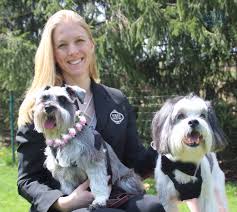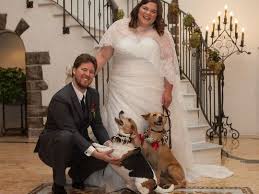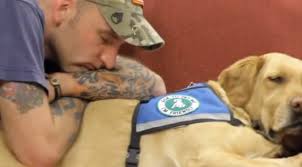Why Are So Many Veterinarians Committing Suicide?
Dr. Elizabeth B. Strand, PhD, LCSW, Univ of Tennessee, Knoxville
 Out-surging Dentists, Veterinarians now have the highest suicide rate in the U.S., at four times the general population. Dr. Elizabeth Strand discusses the causes of this disturbing trend and possible solutions, as the profession is finally starting to talk about this dirty little secret.
Out-surging Dentists, Veterinarians now have the highest suicide rate in the U.S., at four times the general population. Dr. Elizabeth Strand discusses the causes of this disturbing trend and possible solutions, as the profession is finally starting to talk about this dirty little secret.
This is a shocking statistic and Dr. Strand tells us that there is an awareness about the fact that veterinarians experience stress and that it does take an impact and toll on their mental health. They are not just working with wonderful puppies and kittens all day. Dr. Strand states when she tells people this statistic, they say, "What? I never thought about that!" But once they take a moment and reflect on end of life issues that veterinarians face every day, and the fact that pets are members of the family, they will step back and say, "Yeah, I can get that!"
There's been some curiosity and research that because veterinarians euthanize animals who are in pain, that perhaps they can also put themselves out of pain by so euthanasia. Unfortunately, there's no good answer yet in terms of why there might be a higher rate among veterinarians. Dr. Strand thinks that the proximity to the means is something that is common among all medical professionals. For veterinarians, it is a possibility that since euthanasia is a standard practice that happens, it might be a more comfortable idea. But again, there is no clear research regarding this. However, there is some evidence that there is a positive relationship between the number of euthanasias a veterinarian performs in a week and experiences of depression. However, when veterinarians conduct 11 euthanasias in a week, their risk for suicide seems to go down.
Are veterinarians are using the means available to them to take their own lives or the usual ways to commit suicide by hanging or by guns? Current research is looking at death records to determine this and to also get a sense of what the actual rate is in this country. The statistics that state veterinarians suicide is 4 times higher than the general population actually comes out of some research done in England. However, we do have similar findings here in the United States, but researchers are questioning the actual rate. But there have been many, many stories of veterinarians, as well as veterinary nurses, utilizing euthanasia fluid for a means of taking their lives.
So what can be done about this? These conversations are happening more and more and veterinarians are supporting each other and coming out to express their experiences of mental illness and suicidal feelings. Social media is also playing a part in bringing awareness. Also, many of the large veterinarian organizations, like the American Veterinary Medical Association and the American Animal Hospital Association are engaging in online learning, online support groups and certainly at the veterinary educational level there are mental health professional in probably every veterinary college now teaching about mental illness, mental health and protecting one's wellness. There is now a big positive effort.
 When you bring your pet to a veterinarian, you may not know that the veterinarian (who is also a person) is struggling on the other side of the table. This could be their own or business finances, home issues and even just expectation from their work. This is a huge issue for veterinarians. We need to raise awareness of pet owners that their own veterinarians may struggle with stress and when they say out of grief and anger mean things to their veterinarian like, "You only care about money" or "If you don't save my cat, you might as well euthanize me too." These comments go to the heart of a very dedicated medical professional.
When you bring your pet to a veterinarian, you may not know that the veterinarian (who is also a person) is struggling on the other side of the table. This could be their own or business finances, home issues and even just expectation from their work. This is a huge issue for veterinarians. We need to raise awareness of pet owners that their own veterinarians may struggle with stress and when they say out of grief and anger mean things to their veterinarian like, "You only care about money" or "If you don't save my cat, you might as well euthanize me too." These comments go to the heart of a very dedicated medical professional.
Once the general public starts to see their veterinarian as a human being and not just this endless source of compassion, but actually as people like themselves that need to take care of themselves and go home and exercise and say no sometimes, the general public can then have a wonderful influence in showing their compassion and support for their veterinary professionals.
There has been a little bit of research looking at some of the traits of the people who become veterinarians. Some traits are that they tend to be perfectionistic, which Dr. Strand agrees with. There are also very caring. But because Dr. Strand was frequently asked this question, she did a research study where they looked at a concept called ACEs, which is adverse childhood events. Thee adverse childhood events that they looked at were things that happened to people before the age of 18 that set them up for worse physical and mental health. These things fall into categories like abuse, neglect and family problems like having a mother or father with a mental illness or domestic violence.
Surprisingly, there was not a higher rate of ACEs in the childhood histories of the veterinary students that they surveyed in six veterinary colleges. But what was different was that their veterinary students had almost twice as high of a rate of having apparent or caregiver with a mental illness than the general population. So although the number of adverse experiences that they had were not different, they did seem to come from families that had a mental health issue inside it. They are planning more research to see if that bears out in other research studies.
So the next time you go to your veterinarian, please be a little easier on them and remember that they are human too!
Visit Website
Making Your Dog Part of Your Wedding
Kristen Hedderich, Morris Animal Inn
 Kristen Hedderich is a Wedding Pet Concierge. She's available to make your pet's presence perfect on the big day. Kristen covers transportation, grooming and accommodations for your dog so you can focus on your nuptials.
Kristen Hedderich is a Wedding Pet Concierge. She's available to make your pet's presence perfect on the big day. Kristen covers transportation, grooming and accommodations for your dog so you can focus on your nuptials.
For many couples, including their four-legged family members in their nuptials is a dream come true. But doing so can be fraught with challenges - from dirty paws on the bride's gown to Bowser helping himself to the buffet. To make a pet's presence perfect on the big day, Morris Animal Inn, an innovative leader in pet care, is now offering wedding services to help more couples say "I do" beside their dogs.
The Morris Animal Inn started offering a wedding chauffeur and concierge service for weddings in their area. This includes a spa day for the dog in their grooming salon. While the bride is getting pampered and ready for her big day, her dog is also getting photo-ready. The dog is then transported, with a professional handler in tow, to the wedding venue. This gives the bride a peace of mind and one less thing to worry about. She doesn't have to find a family member or friend to bring and look after their dog on the big day, or worse, asking someone who is not invited to come and look after the dog.
Since the Morris Animal Inn started this service, it has been getting a lot of response. There are many brides who are looking to go over the top to involve their dogs in their big day. For now, they are just including dogs in weddings, but the Morris Animal Inn is waiting to see where that leads.
So what happens to the dog after the ceremony? The dog will return to the Morris Animal Inn, where they will provide luxury accommodations and activities for the dog. It may be just for the wedding night only or if the couple is going on immediately to their honeymoon, the dog will also get a little honeymoon vacation.
Some of the brides have stated that they absolutely will not book a venue where they can't bring their dogs. Many venues have had to alter some of their policies and procedures to accommodate these brides. The feedback that the Morris Animal Inn has received from these venues has been very positive. This is because a handler stays with the dog at all times.
 One memorable wedding that Kristen remembers was when a dog was actually the "Best Dog" instead o the best man. The dog was at the alter and became a little vocal during his mom's vows. A handler was standing by, making eye contact with the bride, to see if she wanted them to jump in and control the dog. However, the bride and the guests loved it, with the bride saying it was the best part of her wedding with her dog participating in her vows!
One memorable wedding that Kristen remembers was when a dog was actually the "Best Dog" instead o the best man. The dog was at the alter and became a little vocal during his mom's vows. A handler was standing by, making eye contact with the bride, to see if she wanted them to jump in and control the dog. However, the bride and the guests loved it, with the bride saying it was the best part of her wedding with her dog participating in her vows!
Kristen also tells us about a pair of dogs in another wedding. After the ceremony, everyone was standing outside while the bride and groom and wedding party set up for the receiving line. The doggy concierge was standing off to the side in a side room and somehow the dogs stepped out, as they wanted to be a part of the receiving line, kisses and all. But that's okay, because many of the brides provide special wedding outfits for their dogs. This may include special leashes and collars, as well as bow ties and dresses.
Morris Animal Inn was established in 1960 and is a state-of-the-art pet spa and resort offering superior amenities for dogs and cats including a heated indoor pool, whirlpool, pet suites with soothing music and videos, skylights, indoor and outdoor play areas, pampering and activities packages, daily maid and room service, Happy Hour with homemade pet treats, tuck-in service and more. Located on a quiet country lane with over 12 acres, the facility was designed to provide for both the comfort and safety of all pet guests, with an average of about 100 pets per night.
Visit Website
Pheromones In Puppy Training - Dr. Debbie
 So you just got a new puppy and you have all your training tools at the ready, the collar, leash and dog crate. But beyond that, do you have the one thing that can make your training tasks easier all around? Tap into your puppy's own sense of smell using canine pheromones, and ease your new pup's training and transition into the home.
So you just got a new puppy and you have all your training tools at the ready, the collar, leash and dog crate. But beyond that, do you have the one thing that can make your training tasks easier all around? Tap into your puppy's own sense of smell using canine pheromones, and ease your new pup's training and transition into the home.
Pheromones are scent signals emitted by all animal species, including humans. Various pheromones work under the radar to influence the perceptions and behaviors of others within a species.
Shortly after whelping, a pheromone is emitted from the bitch's sebaceous (oil) glands located between the mammary glands. The pheromone, dubbed the canine appeasing pheromone, reassures the puppies, calms them and facilitates nursing. The bitch stops emitting this pheromone as the pups mature, but all dogs retain the ability to "read" this pheromone. Not only do older dogs recognize this pheromone, but it continues to have a natural calming effect on canines of all ages.
In veterinary behavior cases, the dog appeasing pheromone is used for dogs with noise phobias, car travel anxiety, separation anxiety, and other fearful situations. Various forms are available including pheromone collars, plug in diffusers and sprays. The canine appeasing pheromone doesn't sedate the dog; rather it decreases fear and excitability.
The dog appeasing pheromone is also helpful for newly adopted puppies. Those first few days to weeks in a new home are full of changes for the pup faced with novel environments far from the comfort of mother and siblings. The dog appeasing pheromone has been shown to ease the transition of the pup into new home and improve sociability and training during a pup's critical socialization period.
Pheromone Research
For skeptics that need to see the proof in the studies, veterinary behavior studies have examined the positive influence of the dog appeasing pheromone. When comparing treatment responses for dogs with separation anxiety, the use of the dog appeasing pheromone equaled the benefit of the anti-anxiety medication, amitriptyline.
One study looked at 66 puppies as they settled into new homes after adoption. Approximately half of the puppies wore a pheromone collar and half wore a placebo. The study found that puppies wearing a pheromone collar displayed significantly fewer nuisance behaviors like vocalizations or scratching within 3 days of adoption. Pups wearing the pheromone collar woke their owner's less during the night and displayed fewer signs of distress and vocalizations throughout the course of the study.
The researchers concluded that pheromone collars helped both the pup and family. Pups were less stressed and adapted easier. By decreasing the pup's stress and fearful behaviors, the pet owners found a more enjoyable bonding experience with the new pup and faced less frustration through the training process.
 In another study, puppies 8 to 15 weeks were enrolled in an eight-week long puppy socialization and training class. Half wore a pheromone collar and the other half wore a placebo collar. The pups wearing the collar were calmer in the face of novel experiences and displayed less fear, anxiety, and aggression. In the end, the pups with pheromone collar not only were less nervous, but had fewer behavioral problems and learned better. And a long-term effect on sociability was recognized in dogs up to one year after the class and study was completed.
In another study, puppies 8 to 15 weeks were enrolled in an eight-week long puppy socialization and training class. Half wore a pheromone collar and the other half wore a placebo collar. The pups wearing the collar were calmer in the face of novel experiences and displayed less fear, anxiety, and aggression. In the end, the pups with pheromone collar not only were less nervous, but had fewer behavioral problems and learned better. And a long-term effect on sociability was recognized in dogs up to one year after the class and study was completed.
Pheromones and My Pup
As the new owner of a nine-week old Bouvier puppy named Nikki, I used both the pheromone collar and diffuser upon welcoming my new pup home. One day before bringing Nikki home, I placed a pheromone diffuser close to the puppy crate, where it would have maximum benefit during her first nights in the kennel away from mother and siblings. Immediately upon leaving the breeder's home, Nikki was fitted with a pheromone collar to serve as a source of reassuring pheromones that went everywhere she did. The pheromone collar has become a tool in Nikki's socialization. It's on her when she meets new people or animals, when she explores new environments, and during puppy kindergarten class.
Did pheromones help in my pup's transition and training? The four hour drive home from the breeders was a dream, no crying or whining the entire trip. Now three weeks later from acquiring my pup, and Nikki never soiled in her kennel during the day or night. I'll admit I had my share of interrupted sleep in the first two weeks, but most of Nikki's night time wakes were for genuine elimination needs. Overall her transition into the home was smooth and lacked the wailing, inconsolable cries of a stressed pup.
The canine appeasing pheromone isn't a magic bullet though. Nothing matches a quality pup obtained from a reputable breeder who focuses on health, genetics, and early socialization. Likewise pheromones do not replace the hard work and consistent training efforts that any new pet owner must provide. However, by adding the the canine appeasing pheromone to your new puppy training, you can help your pup become the best he or she possibly can.
For more information on the DAP products, visit CEVA.
Featured veterinarian known as "Dr. Debbie" on national pet radio program, Animal Radio. Ebook author of "Yorkshire Terriers: How to Be Your Dog's Best Friend"; "Pugs: How to Be Your Dog's Best Friend"; "Mini Schnauzers: How to Be Your Dog's Best Friend"; and "Shih Tzu: How to Be Your Dog's Best Friend." Dr. Debbie's books.
Visit Website
Animal Radio News - Lori Brooks
 Device Would Translate Your Cat's Meows and Dog's Barks to English
Device Would Translate Your Cat's Meows and Dog's Barks to English
How Many Times Have You Wished Your Pets Could Talk? Well, the next best thing could be less than a decade away, according to a report that was co-authored by Futurologist William Higham of Next Big Thing. Higham points to the work being done by a professor of biological sciences at Northern Arizona University, who has spent 30 years studying the behavior of prairie dogs. Her work shows prairie dogs have a sophisticated communication system that has all the aspects of language. And, she's found that they have words for different species of predators and can describe the color of clothes a human is wearing or the coat of coyotes and dogs. So, Higham is convinced that other animals can do the same and is attempting to raise money to develop a cat and dog language translation device. Amazon already sells one device for cats that changes a human voice into meows. However, there is a psychologist at Portsmouth University who works on interactions between humans and dogs and she is less optimistic that we will soon be able to decipher barks, mainly because she does not think that the way a dog 'woofs' can be viewed as a language. She thinks a dog's body language says more. For example, she says a right-sided tail wag is positive, while a wag to the left not so positive.
 Parrot Witnesses Murder
Parrot Witnesses Murder
Most of us have heard the story about a pet parrot that witnessed his owner's murder. Now we find out that a woman in Michigan was convicted of first-degree murder in that case for killing her husband, who was Bud the parrot's pet parent. It turns out that although Bud, an African Gray witnessed the killing, Bud's testimony was not used in court. A state prosecutor tried to use Bud's phrases as evidence in the trial, but a judge dismissed it. After the killing Bud was recorded saying, "Don't 'blanking' shoot," in his dad's voice. The victim's mother says Bud picks up everything and anything that is said, and adds that he's also, "Got the filthiest mouth around."
Pet Pampering Apartment Buildings
Pet pampering apartment buildings around the country are on the rise with some awesome amenities being offered. The most popular among them are dog runs, and they're not what you would expect. These are dog runs inside high-rise buildings on some of the higher floors; so there's no need to even go down to street level. Pet parents in these buildings can take advantage of discounts on dog walking, vet and grooming services, attend monthly yappy hours and access pet geared vending machines in lobbies that sell things like organic oatmeal dog shampoo. More than simply being pet-friendly, these buildings treat dogs and cats as valued residents who deserve their own perks. In Chicago, there's a building with a private dog park just for residents. Some buildings advertise that they have visits from doggie-treat food trucks. It's not ALL fun and pets though. Some buildings utilize PooPrints, a company that analyzes the DNA in animal droppings to track down owners who don't clean up after their pet.
 Legislation Would Provide Service Dogs & Insurance to Veterans with PTSD
Legislation Would Provide Service Dogs & Insurance to Veterans with PTSD
The PAWS Act also known as Puppies Assisting Wounded Service members Act was introduced on Capitol Hill by Florida Congressman Ron DeSantis, who is a lieutenant commander in the Navy Reserve. Believe it or not, the proposed legislation actually received bipartisan support. It will direct the Department of Veterans Affairs to carry out a 5-year pilot program providing service dogs and veterinary health insurance to veterans with PTSD (Post Traumatic Stress Disorder) who were active duty on or after the September 11th attacks. In other news on this subject, the Center for the Human Animal Bond at Purdue University will partner with K9s for Warriors, which provides service dogs to veterans with PTSD and other disorders, for a clinical trial to analyze and quantify, the influence service dogs have on the lives of military veterans. Previous studies suggest that people who bond with their dogs have higher levels of the hormone oxytocin sometimes called the 'love' or 'cuddle' hormone because it produces emotional responses that aid in relaxation and trust. The study would also investigate claims by the National Center for PTSD that dogs can encourage veterans to communicate more through commands and training and also help them to spend more time outdoors and meet new people.
Don't Know What To Name Your Pet? Try Using Artificial Intelligence
Pet names are so important and now so creative. An animal rescue in Pennsylvania sought help from Janelle Shane, an artificial intelligence researcher, to name a group of guinea pigs. Shane normally trains artificial neural networks to come up with names for things like paint colors or recipes, but lately she's being recruited to name Guinea pigs. Here's how it works: she puts in a list of 600+ guinea pig names and then the computer trains itself to produce more names like the ones she put in. The computer then forms its own rules about which letters and letter combinations are the most quintessentially guinea pig. So, the chosen names included Spooty, Snofer, Fizzby, Sprinket, Dandy, Mumpkans, Ast-rono and Hally Flope.
 Listen to the entire Podcast of this show (#1114)
Listen to the entire Podcast of this show (#1114)





